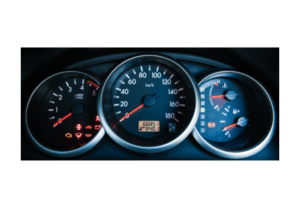The Honda CR-V is one of the most popular sport utility vehicles on the market. It has a capable suspension system, a reliable powertrain, and plenty of cargo and passenger space. The Honda CR-V is also equipped with a brake system light that provides you with warnings about potential issues within the braking system. Learn what will cause the Honda CRV brake system light fault on your dash.
The brake system light can be triggered by a variety of issues, including low brake fluid levels or worn-out brake components. It may also be triggered if there is an issue with one of the sensors in the braking system. When it illuminates, it’s important to take action to rectify the problem as soon as possible in order to avoid any further damage being done to your vehicle.
In order to diagnose and troubleshoot the problem, it’s important that you have an understanding of how your specific Honda CR-V’s braking system works and what process should be followed when diagnosing and fixing an issue with this system. A qualified mechanic will be able to perform a visual inspection of your brakes and associated components in order to identify any potential issues that could be causing the warning light to come on. They will also check for any warning lights or codes that are being displayed on your dashboard display, which will help them pinpoint any potential problems more accurately.
Contents
Causes of the Brake System Light Being On

One of the most common causes of the brake system light being illuminated in a Honda CR-V is low brake fluid levels. If there isn’t enough brake fluid in the reservoir, then it can cause problems within the braking system and trigger the light to illuminate. You should check your car’s brakes regularly to ensure they are topped up with fresh, clean fluid as this will help prevent any issues from occurring.
Another potential issue that may trigger the warning light is faulty or worn-out brake components. It’s important to inspect your brakes periodically for signs of wear and tear, as worn parts can impair how effectively your car brakes and also put further strain on other components within the braking system. If you identify any parts that need replacing, it’s best to take immediate action in order to avoid any further damage being done to your Honda CR-V.
In addition to checking for low brake fluid levels and inspecting for faulty or worn-out components, it’s also important that you keep an eye on your car’s dash display as this may provide you with insight into what type of issue is causing the warning light to come on. By monitoring this area closely, you can make sure that you are aware of any problems before they become too severe and require costly repairs.
Ways to Diagnose Honda Brake System Light on Dash
When it comes to diagnosing an issue with your Honda CR-V’s brake system, one of the best ways to get a better understanding of the problem is by checking for any warning lights or codes that are displayed on your dashboard display. Depending on the severity of the issue, there may be different messages that are shown which can provide you with more insight into what type of problem needs to be addressed.
It’s also important that you perform a visual inspection of your brakes and associated components in order to identify any potential issues that could be causing the warning light to come on. If you have access to the appropriate tools and knowledge, it is possible for you to inspect your brakes yourself; otherwise, it’s best to take your car to a qualified mechanic who will be able to identify any issues that need addressing.
When troubleshooting problems with your Honda CR-V’s braking system, it’s important that you don’t overlook other factors such as checking for low brake fluid levels or worn-out parts. These are all components that can cause significant damage if not addressed properly and can lead to further complications down the road if left alone for too long.
Troubleshooting Honda Brake System Light
When attempting to troubleshoot the issue with your Honda CR-V’s brakes, one of the things you should consider is adding brake fluid to your reservoir tank. If there isn’t enough fluid in the system, then this can cause various issues and will trigger a warning light to appear on your dashboard display. You should check your car’s brakes regularly to ensure they are topped up with fresh, clean fluid as this will help prevent any further problems from occurring.
In some cases, it may be necessary to replace faulty or worn-out components within the braking system in order to resolve the issue. Worn parts can impair how effectively your car brakes and put additional strain on other components within the system. If you identify any parts that need replacing, it’s best to take immediate action in order to avoid any further damage being done to your Honda CR-V.
If you’re unsure what kind of repairs that need to be performed or how best to go about diagnosing and resolving the problem then it may be worth consulting an expert mechanic. A qualified professional will be able to give you more information regarding what steps need to be taken in order to get your car back into working order as quickly and cost-effectively as possible.
Conclusion
As we have discussed, diagnosing and fixing any issues with your Honda CR-V’s braking system is an important task that should not be overlooked. It is essential that you check for warning lights or codes which can provide a better understanding of the issue at hand.
Performing a visual inspection of all brakes and components associated with the car’s braking system can help identify potential problems that may cause the warning light to come on. If there are worn-out parts or low brake fluid levels then these need addressing in order to prevent any further damage.
Finally, if you’re unsure of what steps need to be taken in order to fix the problem then it’s best to consult with a qualified mechanic who will advise you on how best to diagnose and resolve the issue quickly and efficiently. In conclusion, taking good care of your Honda CR-V is paramount in ensuring its safe operation when driving around town.
